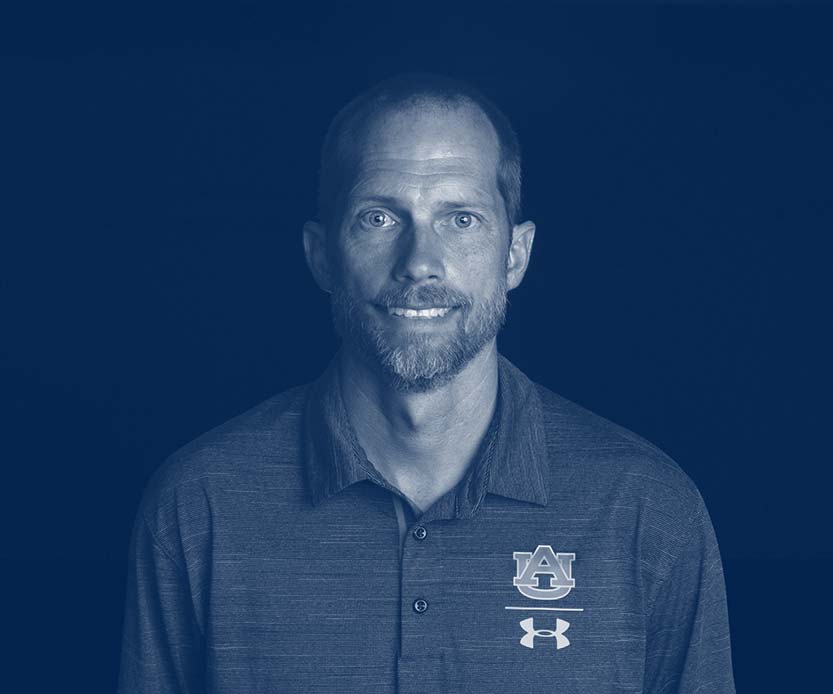As director of athletic turf and grounds for the Auburn University Athletics Department, two-time College of Agriculture graduate Eric Kleypas plays a critical role in keeping the Tigers running on solid ground, not only on gameday but year round.
While the untrained observer might think Kleypas’ job is just a matter of watering, mowing and painting, Auburn coaches know better. On any given day, Kleypas and his crew make good use of the complex science his degrees taught him.
For example, because the SEC’s goliath linebackers tend to take equally enormous divots out of the field, Kleypas must know that Auburn’s home turf has enough growing points per square inch to fill those divots by the time the next team, and television crews, roll into town—often only a few days after the last ones left.
Healthy grass doesn’t just need to look good when a player scores a game-winning touchdown. Auburn’s flawless field could be the hook that snares a top recruit in the first place. “Football is a year-round process, because there’s never a time when someone’s not walking out on the field,” he said. “Even after football season, we are keeping the field game-ready for recruits.”
In the spring, as soon as the A-Day game is over and fans have left the field, he and his crew get to work prepping for summer football camps and unofficial recruiting visits. “We never want there to be a time when a recruit could come out and see something that’s sub-par,” Kleypas said.
Football isn’t the only season in Kleypas’ year, either, so his hard work doesn’t stop at the gates of Jordan-Hare. He and the crew care for the turf at the university’s baseball, softball, soccer, track and field and golf facilities.
Although he has the job of his dreams, he never imagined he’d be managing Pat Dye Field for a living when he arrived on the Plains as an undergrad nearly two and a half decades ago.
The Texas native, who moved with his parents to Guin, Alabama, at age 9, enrolled at Auburn after two years at a community college and soon got a job with the Auburn Turf Crew, helping with pesticide and fertilizer applications on various athletic fields. After being part of the crew as an undergrad and then as a master’s student in agricultural science, Kleypas landed the role of director of athletic turf and grounds.
While pressure is an everyday part of his job, the position is not without perks. Kleypas has been on the sidelines during just about every home football game since 1998, and those experiences have afforded him some of his fondest memories.
Being on the sidelines the first time was one of them. “The crowd noise was hard to believe,” he said. “You think it’s loud when you’re up in the stands, but when you’re at field level, it’s pretty hard to believe how loud the fans can get.”
When he was first hired years ago, he was in awe of the athletes and their talent, but now he is watching how the field is holding up and how it might affect the players. “Should they be able to make that cut or should the turf be sheered for the sake of the student athlete? How’s the field holding up? What can we tweak to make it even better?”
Kleypas also wants to help turf grass students just as his professors mentored him. He and the crew guide students as they assist with and gain invaluable experience in helping keep the fields in top condition.
“Not only am I an Auburn fan, but an Auburn employee, so I take a lot of pride in it,” he said. “When we see our students get quality internships and jobs, we’re proud of that. We want the turf grass program to succeed and thrive.”
Written by Mary Catherine Gaston and Charles Martin



